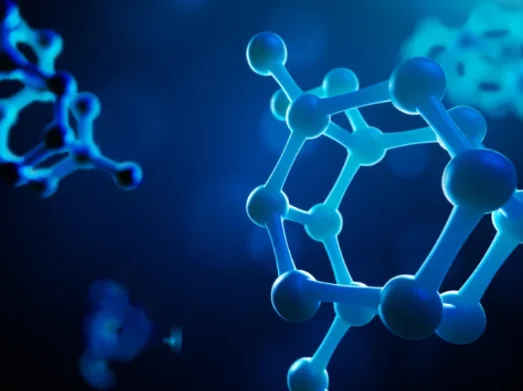The success of a drug in the body hinges on its physicochemical properties, which dictate its absorption, distribution, metabolism, and excretion (ADME). Understanding these properties is crucial for drug discovery and development. Researchers focus on traits like solubility, lipophilicity, and ionization to improve a compound’s chances of becoming a viable therapy. These properties affect a drug’s ability to reach its target in the right concentration and to remain active for the desired duration. With countless potential compounds, filtering them based on their physicochemical characteristics streamlines the development process. Thus, effective drug design heavily relies on thoroughly assessing these aspects to optimize therapeutic potential while minimizing adverse effects. This blog delves into the core physicochemical traits that define drug behavior and examines how they shape a compound’s journey into becoming a successful therapeutic agent.
Core Properties That Define Drug Behavior
Drugs interact with complex biological systems, and their physicochemical properties significantly influence their behavior. The core traits—solubility, lipophilicity, and ionization—are paramount in determining a drug’s pharmacokinetic profile and therapeutic efficacy. Each of these properties plays an essential role in the drug’s journey through the human body.
Solubility and its Impact
Solubility is a drug’s ability to dissolve in bodily fluids, a vital step for absorption. Poor solubility hinders a drug’s bioavailability, which can render even potent drugs ineffective. Consequently, drug development emphasizes enhancing solubility to ensure sufficient absorption into the bloodstream. Techniques like salt formation, particle size reduction, and using solubilizing excipients can improve solubility. By understanding and optimizing a drug’s solubility, researchers can enhance its absorption and ultimately, its therapeutic effect.
Lipophilicity (Log P/Log D) and Permeability
Lipophilicity refers to a drug’s affinity for lipid environments versus aqueous ones. It impacts a drug’s membrane permeability and its distribution across the body. Measured by Log P or Log D values, lipophilicity influences absorption and tissue penetration. A compound with optimal lipophilicity balances adequate permeability with limited accumulation in fatty tissues. Compounds with high lipophilicity might experience excessive permeability, leading to toxicity. Thus, achieving the right lipophilicity is crucial for ensuring effective drug delivery and reduced side effects.
Ionization, Stability, and Molecular Traits
Drugs are often ionizable molecules, and their ionization state influences absorption and solubility. Stability, molecular weight, and polarity are also critical traits governing drug behavior and efficacy.
pKa and Ionization State
The pKa of a drug defines the pH at which it exists in ionized and non-ionized forms. This balance affects solubility and permeability because the non-ionized form often penetrates membranes more easily. Therefore, understanding the ionization state is crucial to predicting where a drug will be absorbed within the gastrointestinal tract. Adjusting the pKa allows scientists to optimize a drug’s absorption profile, striking the right balance between efficacy and tolerability.
Stability, Molecular Weight, and Polarity
Drug stability ensures that compounds remain active and effective over time, under various conditions. Chemical stability safeguards against premature degradation, ensuring drugs retain therapeutic potency until they reach their target. Molecular weight affects a drug’s ability to permeate cells; compounds typically below 500 Da cross membranes more efficiently. Polarity, meanwhile, influences solubility and permeation; nonpolar drugs may struggle in aqueous environments but excel in lipid membranes. A balanced approach, considering molecular traits, ensures optimized drug performance.
Metrics and Rules for Compound Optimization
Optimization of compounds relies on metrics and actionable rules to guide researchers in designing successful drugs. They help streamline the drug discovery process and enhance the probability of bringing effective therapies to market.
Lipophilic Efficiency and Drug-likeness
Lipophilic efficiency (LiPE) assesses a compound’s potency relative to its lipophilicity. High LiPE indicates a drug possesses potent activity with manageable lipophilicity, which is advantageous for pharmacokinetic and safety profiles. Evaluating drug-likeness involves considering molecular properties that align with successful oral drugs. Compounds demonstrating favorable LiPE and drug-likeness metrics are prioritized in drug development pipelines.

Lipinski’s Rule of Five and Beyond
Lipinski’s Rule of Five is a cornerstone guideline predicting oral drug success. It recommends compounds should have no more than five hydrogen bond donors, ten hydrogen bond acceptors, a molecular weight under 500 Da, and a Log P under 5. While useful, the rule has limitations, and exceptions exist, especially for non-oral and biologically complex drugs. Advances in drug design now consider enhancing compound flexibility and exploring beyond traditional Lipinski parameters to capture innovative therapeutics.
Conclusion
To define physicochemical properties, one must understand that these traits determine how drugs interact with biological systems. Understanding the physicochemical properties of drugs is critical to navigating the complex drug discovery landscape. Solubility, lipophilicity, ionization, and other molecular traits orchestrate how a drug behaves in the body, influencing its absorption, distribution, and overall efficacy. Leveraging established metrics and guidelines like Lipophilic Efficiency and Lipinski’s Rule of Five ensures the optimization of these properties for enhanced drug development success. By meticulously tailoring these traits, scientists can steer compounds through the myriad biological barriers, improving the likelihood of developing potent, safe, and effective therapeutics. Continually evolving strategies in drug design promise to unlock novel therapies, addressing unmet medical needs and advancing the frontiers of medicine.


